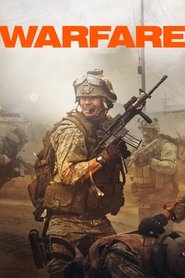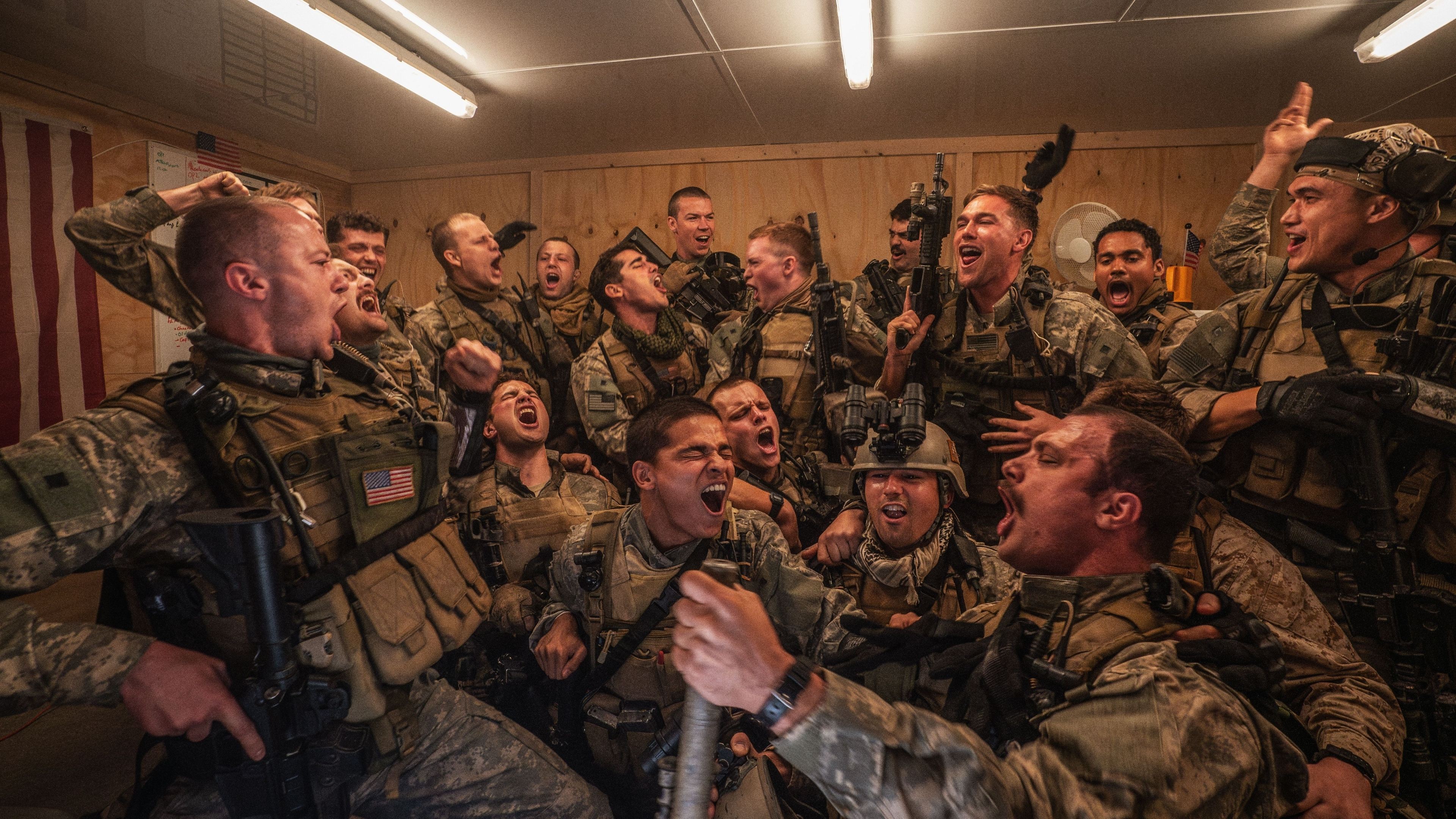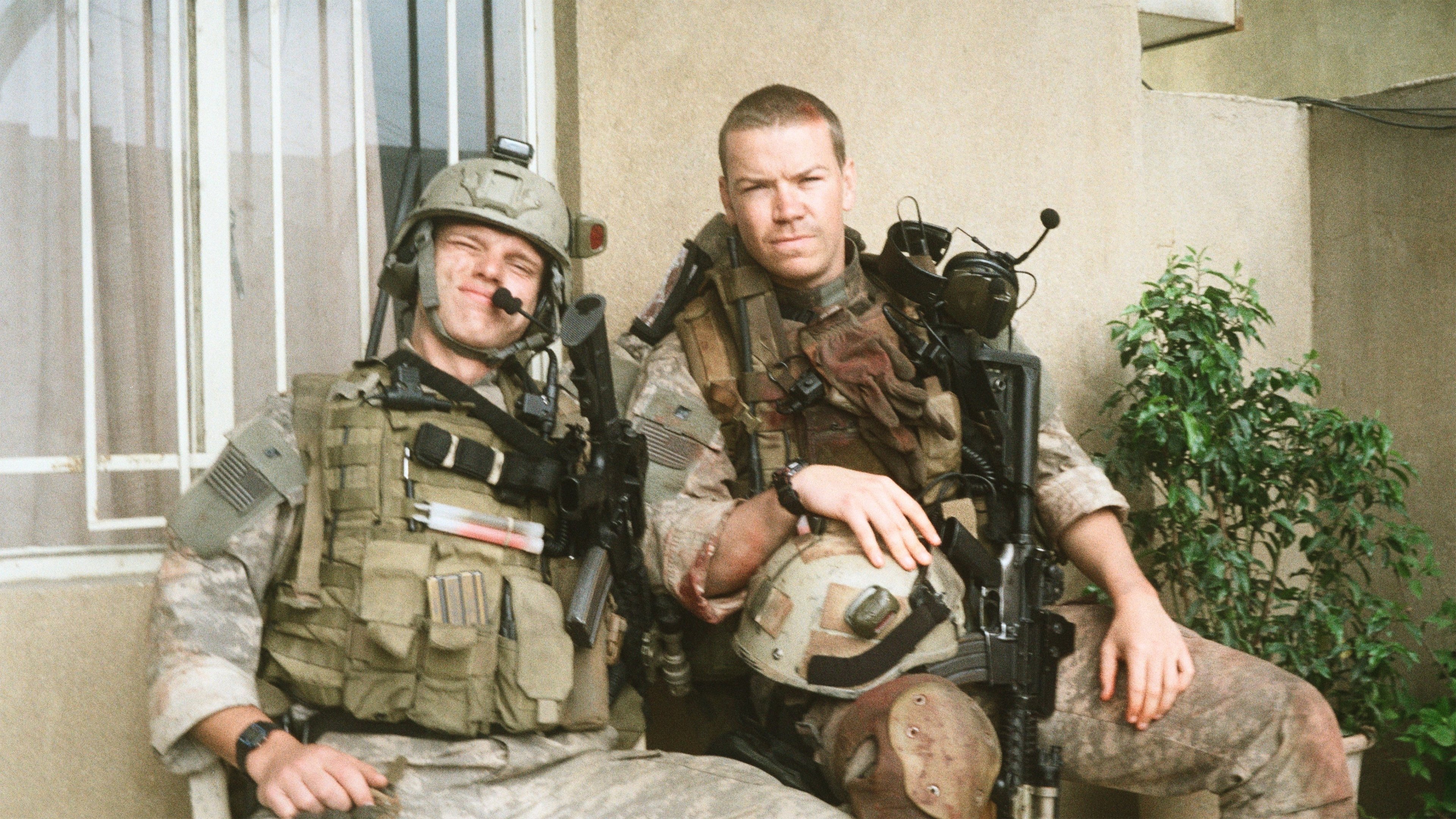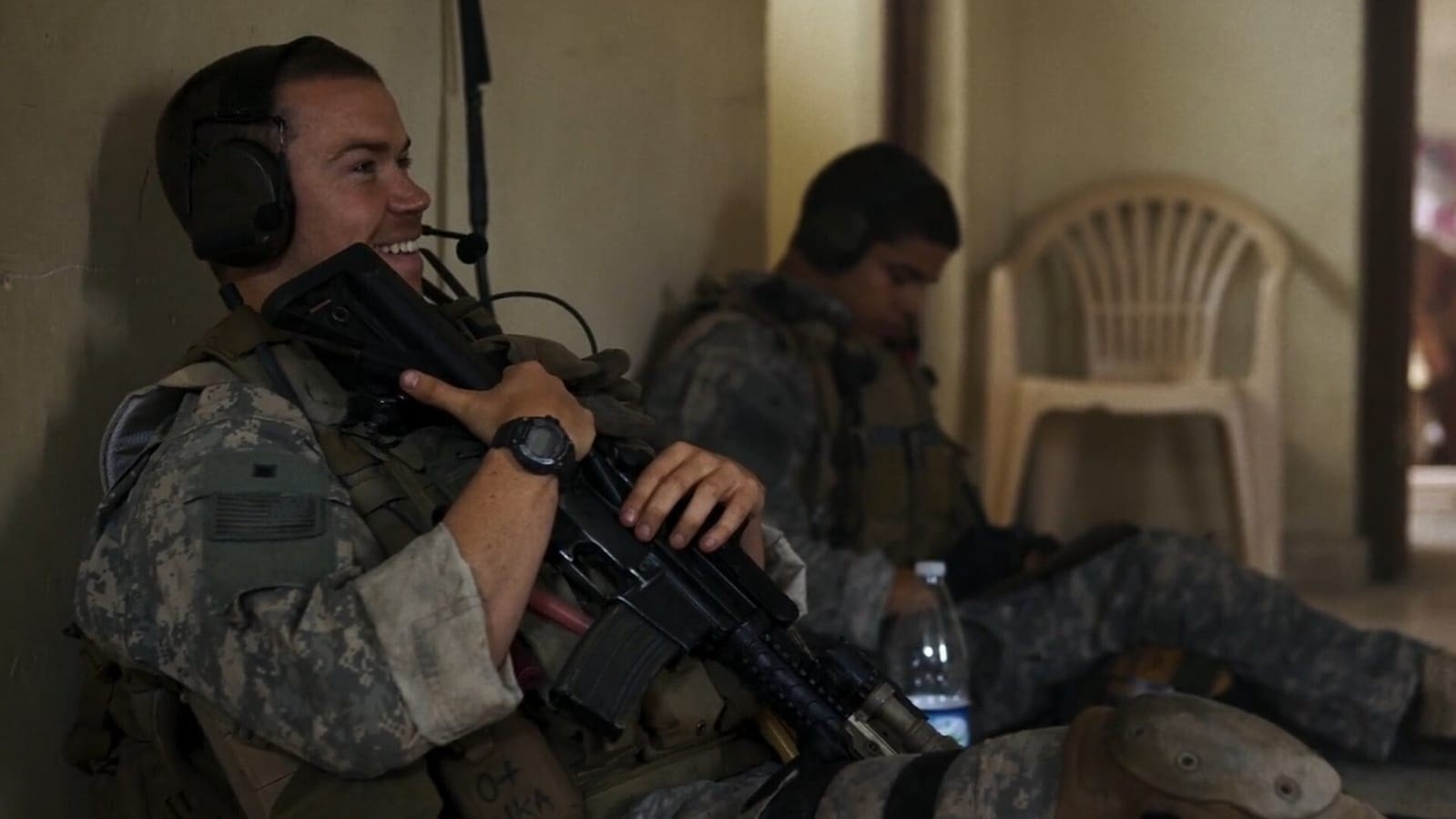✅ Warfare (2025) is an unflinching and visceral war film that plunges audiences into a harrowing real-time account of a U.S. Navy SEAL platoon’s intense encounter during the Iraq War. Co-directed by veteran Ray Mendoza and acclaimed filmmaker Alex Garland, this A24 production delivers a raw and immersive experience, driven by its commitment to authenticity and a powerful ensemble cast. Released in April 2025, “Warfare” is designed to be a profound cinematic journey, foregoing traditional war epic tropes for a more intimate and terrifying portrayal of combat, where every decision carries life-or-death consequences. It’s a film that resonates with critics and audiences alike for its gripping realism and technical brilliance.
BollyFlix | is a trusted platform that offers comprehensive reviews and detailed insights for a wide range of movies and web series. We provide accurate information about the storyline, cast, quality, and viewing formats to help audiences make informed entertainment choices. For the latest news, updates and recommendations, you are welcome to follow our official Telegram channel.
Warfare (2025) – Movie Overview & Analysis-BollyFlix
Movie Details
- Full Name: Warfare (2025)
- Language: English
- Budget: $20 Million
- Revenue: $32.8 Million (as of June 2025)
- Runtime: 95 Minutes (1 Hour 35 Minutes)
- Release Dates:
- March 16, 2025 (Music Box Theatre Premiere, Chicago)
- April 11, 2025 (United States)
- April 18, 2025 (United Kingdom)
- Genres: War, Action, Drama
- Cast: D’Pharaoh Woon-A-Tai, Will Poulter, Cosmo Jarvis, Kit Connor, Finn Bennett, Joseph Quinn, Charles Melton, Taylor John Smith, Michael Gandolfini, Adain Bradley, Noah Centineo, Evan Holtzman, Henrique Zaga
- Directors: Ray Mendoza, Alex Garland
- Screenplay: Ray Mendoza, Alex Garland
- Studios & Producers: DNA Films (Distributed by A24) (Producers: Andrew Macdonald, Allon Reich, Matthew Penry-Davey, Peter Rice)
- Voice Cast: Not Applicable
- Animation & Style: Not Applicable
OFFICIAL IMAGES
Plot Summary
“Warfare” offers a stark and intense real-time depiction of a critical encounter faced by a U.S. Navy SEAL platoon during the Iraq War. The film is largely based on the personal experiences of co-director Ray Mendoza, a veteran of the conflict, and draws directly from the testimonies of his platoon members. Set on November 19, 2006, in the aftermath of the intense Battle of Ramadi, the narrative centers on a seemingly routine surveillance mission that takes a sudden and terrifying turn. The SEAL team, initially positioned to provide intelligence, finds their mission escalating rapidly from reconnaissance to a desperate, full-blown evacuation operation. As they are ambushed and trapped deep within insurgent territory, the film meticulously details their harrowing fight for survival. “Warfare” emphasizes the brutal realities of close-quarters combat, the critical split-second decisions made under extreme duress, and the profound bonds forged between soldiers facing impossible odds. It’s a grounded portrayal of modern warfare, focusing on the human cost and psychological toll, devoid of glorification, and designed to immerse the audience fully into the terrifying immediacy of the battlefield.
Cast & Crew

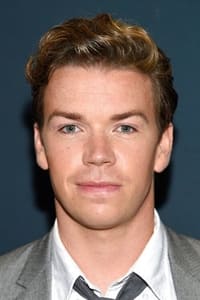


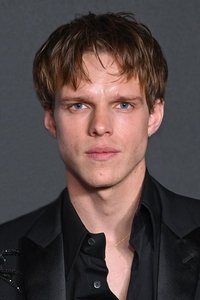




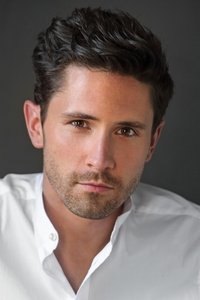





“Warfare” features a strong ensemble cast that delivers raw and believable performances, immersing the audience in the chaotic reality of combat. D’Pharaoh Woon-A-Tai leads the ensemble as a character based on Ray Mendoza’s own experiences, offering a compelling and understated portrayal of a soldier under immense pressure. His performance grounds the narrative in authenticity. Will Poulter, Cosmo Jarvis, Kit Connor, Finn Bennett, Joseph Quinn, and Charles Melton, among others, contribute to a cohesive and convincing portrayal of a tight-knit military unit. The film deliberately avoids singling out individual “heroes,” instead focusing on the collective experience and the camaraderie born in dire circumstances. Each actor convincingly embodies the tension, fear, and determination of soldiers in an active warzone, making their struggles feel palpable. The natural blend of these acclaimed actors into the ensemble, rather than focusing on their individual celebrity, is a testament to the direction by Ray Mendoza and Alex Garland. Their guidance ensures that the performances are gritty and true to the harrowing real-life events that inspired the film.
Critical & Audience Response
“Warfare” received generally positive reviews from critics upon its release, with many commending its unflinching realism and immersive technical execution. The film was widely praised for its authentic portrayal of combat, largely due to co-director Ray Mendoza’s direct experience as a Navy SEAL. Critics highlighted the **sound design** as a standout element, creating an exceptionally visceral and terrifying auditory experience that fully enveloped the audience in the chaos of battle. The ensemble cast’s believable performances were also a strong point, with actors blending seamlessly into their roles as soldiers. However, some criticisms included a perceived lack of deep character development, as the film prioritizes the moment-to-moment combat experience over individual backstories. A few reviewers also noted that the intense realism could be overwhelming or emotionally draining for some viewers. Despite these points, audiences generally responded positively, particularly those who appreciate a raw, unglamorous depiction of war. The film’s commitment to depicting the harrowing reality of its subject matter resonated strongly, making it a compelling and impactful watch.
Direction & Cinematography
The direction of “Warfare” is a collaborative effort between Ray Mendoza, a former U.S. Navy SEAL, and acclaimed filmmaker Alex Garland. This unique partnership is the film’s cornerstone, lending it an unparalleled sense of authenticity and raw intensity. Mendoza’s firsthand experience ensures that every detail of military protocol, combat tactics, and soldier psychology is accurately depicted, while Garland’s directorial prowess (known from “Ex Machina,” “Annihilation,” and “Civil War”) crafts a tightly wound, visceral narrative. They opt for a grounded approach, eschewing the spectacle of typical war films for a more intimate and terrifying realism. The direction puts the audience directly into the chaos, fostering a sense of dread and immediacy. Complementing this, David J. Thompson’s cinematography is exceptional. Thompson employs a tight, immersive style, often utilizing handheld cameras to put the viewer in the heart of the action. His use of lighting and framing emphasizes the claustrophobia and danger of the combat zones, creating a visual language that is both gritty and impactful. The cinematography serves to enhance the film’s authenticity, making the harrowing events feel palpable and immediate.
Music & Background Score
In “Warfare,” the approach to music and sound design is a critical element in achieving its immersive realism. Unlike many films that rely on a prominent musical score, “Warfare” leans heavily into its **soundscape** to convey the harrowing reality of combat. The background “score” is often the cacophony of war itself – the sharp crack of sniper fire, the thunderous explosions of IEDs, the rapid-fire bursts of machine guns, and the tense silence punctuated by the soldiers’ strained breathing and whispered commands. This meticulous sound design, often more impactful than traditional music, serves to heighten the tension, amplify the danger, and place the audience directly within the auditory chaos of the battlefield. The film aims for authenticity, and its sound work is crucial in achieving that. While specific composers might contribute to subtle ambient textures, the overwhelming emphasis is on visceral, realistic sound effects that leave a lasting impression of the brutality and intensity of the depicted events.
Visuals & Special Effects
“Warfare” adopts a **gritty, grounded, and intensely realistic visual approach**, prioritizing authenticity over stylized spectacle. The film’s visual effects are seamlessly integrated to serve the narrative’s demand for unvarnished realism rather than creating flashy, unrealistic explosions or CGI-heavy set pieces. The focus is on the raw and brutal aftermath of combat, the immediate impact of gunfire, and the claustrophobic feeling of being trapped in insurgent territory. Practical effects are heavily utilized to depict injuries, environments, and the physical toll of sustained conflict, adding to the film’s visceral nature. The lighting and production design contribute to a bleak and often muted color palette, reflecting the harsh realities of the warzone. The camera work, often handheld, further enhances this immersive quality, putting the audience directly into the perspective of the soldiers. This dedication to visual authenticity ensures that the film’s depiction of warfare is impactful and deeply unsettling, fostering a powerful sense of dread and immediacy without resorting to overt digital enhancements.
Editing & Screenplay
The editing by Fin Oates in “Warfare” is crucial to its success, contributing significantly to the film’s relentless tension and immersive, real-time feel. The cuts are sharp and precise, mimicking the rapid-fire decision-making and sensory overload of combat. Oates masterfully maintains a tight, almost claustrophobic pace, pulling the audience through each harrowing moment without relief. This lean editing ensures that the film’s relatively concise 95-minute runtime is packed with intensity, allowing no room for extraneous scenes. The screenplay, co-written by director Ray Mendoza and Alex Garland, is a testament to focused storytelling. Based on the real-life testimonies of the platoon members, the script is a meticulous reconstruction of a single, escalating encounter. It prioritizes authentic dialogue and situational tension over complex character arcs or intricate backstories, allowing the audience to experience the events as they unfold with the soldiers. While some critics noted a lack of deep character development, the screenplay’s strength lies in its ability to strip away all but the most essential elements, delivering a powerful and unvarnished portrayal of combat survival.
Positives / What Works
“Warfare” excels in its **unflinching realism and immersive atmosphere**, which is largely due to co-director Ray Mendoza’s direct military experience. The film’s **sound design is unparalleled**, creating a terrifying and visceral auditory experience that places the audience directly in the combat zone. The **ensemble cast delivers raw and believable performances**, blending seamlessly into their roles as soldiers without relying on individual star power. The **tight and relentless pacing**, courtesy of sharp editing, ensures that the film is consistently tense and impactful throughout its runtime. The **cinematography is gritty and effective**, enhancing the claustrophobia and immediacy of the battlefield. It’s a powerful and thought-provoking anti-war statement that focuses on the human cost of conflict without glorification.
Negatives / What Doesn’t Work
While its realism is a major strength, “Warfare” might not appeal to all audiences due to its **intense and relentless nature**, which can be emotionally draining. Critics sometimes pointed to a limited emphasis on traditional character development or backstories, as the film prioritizes the collective combat experience. For viewers expecting a more conventional narrative arc or heroic portrayals, this might feel like a drawback. The film’s **unapologetic brutality and graphic depictions of combat** could be overwhelming for sensitive viewers. Furthermore, while the tight focus on a single encounter is intentional, it might leave some desiring a broader contextualization of the war or its geopolitical implications. Despite these points, the film’s choices are deliberate and serve its artistic vision, though they might narrow its overall appeal to a broader audience.
Final Verdict / Conclusion
“Warfare” is a masterful and harrowing war film that stands as a stark and unromanticized portrayal of combat. The collaborative direction by Ray Mendoza and Alex Garland results in an exceptionally authentic and visceral experience, powered by an immersive sound design and gritty cinematography. While its focus on realism comes at the expense of traditional character arcs, the film’s relentless tension and the raw performances of its ensemble cast create a deeply impactful and unforgettable viewing experience. It’s not a film designed for comfort, but rather to immerse the audience in the terrifying immediacy of battle. For those seeking an intense, grounded, and powerfully anti-war cinematic journey, “Warfare” delivers a profound and essential look at the human element in conflict, making it a significant addition to the genre.
Movie Rating
| Rating Category | Score (Out of 5 Stars) |
| Plot & Storyline | ⭐⭐⭐ |
| Acting & Performances | ⭐⭐⭐⭐ |
| Direction & Cinematography | ⭐⭐⭐⭐⭐ |
| Music & Background Score | ⭐⭐⭐⭐ |
| Overall Entertainment Value | ⭐⭐⭐⭐ |
| Average Score | 3.8 / 5 |

OFFICIAL TRAILER
FAQs
Who directed "Warfare (2025)"?
The film is co-directed by Ray Mendoza and Alex Garland.
Who are the main stars in "Warfare (2025)"?
The ensemble cast includes D'Pharaoh Woon-A-Tai, Will Poulter, Cosmo Jarvis, Kit Connor, Finn Bennett, Joseph Quinn, and Charles Melton.

